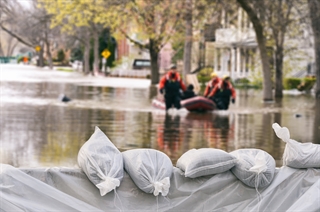
A lifeline for the National Flood Insurance Program
A lifeline for the National Flood Insurance Program
Authored By
Practices
 The National Flood Insurance Program is still under water, but new debt-forgiveness legislation means it will no longer be in quite as deep. Yesterday, the United States Senate passed a $36.5 billion disaster aid package to assist areas affected by the recent hurricanes and wildfires. Though not highly publicized, the package included terms to wipe away $16 billion of the flood insurance program’s $30 billion in debt. The Senate’s action follows on the heels of the bill’s passage in the House of Representatives last week. Presidential approval is anticipated, as the Trump administration advocated for the relief.
The National Flood Insurance Program is still under water, but new debt-forgiveness legislation means it will no longer be in quite as deep. Yesterday, the United States Senate passed a $36.5 billion disaster aid package to assist areas affected by the recent hurricanes and wildfires. Though not highly publicized, the package included terms to wipe away $16 billion of the flood insurance program’s $30 billion in debt. The Senate’s action follows on the heels of the bill’s passage in the House of Representatives last week. Presidential approval is anticipated, as the Trump administration advocated for the relief.
Financial trouble is not new to the flood insurance program. Started in 1968 as an alternative to the private flood insurance market (which had dried up), the program has never found a way to keep premiums affordable while generating enough money to pay all claims. As such, the program has gradually sunk further and further into debt. This fall, Hurricane Harvey (and Irma and Maria) exacerbated the problem and pushed the program to the breaking point. Without the new legislation, the program had been projected to reach its borrowing limit of $30.4 billion this week, at which point it would have been unable to pay claims.
The debt-relief bill is probably not Congress’ last act for the year on flood insurance. The program’s authorization is set to expire on Dec. 8 (having been recently extended from Sept. 30). There is widespread sentiment that the program needs an overhaul, but the politics are complicated, with legislators in flood-prone states (Texas, Louisiana and Florida) highly motivated to protect their constituents’ interests in maintaining subsidized premiums.
The solutions are not readily apparent. Reinsurance might help off-load some of the risk, but it won’t provide anywhere near a total fix. Interestingly, the program recently obtained reinsurance for the first time. In 2017, the program entered into agreements with over two dozen reinsurers to cover 26 percent of the losses between $4 billion and $8 billion (essentially $1 billion of reinsurance cover) from a single flooding event. That entire $1 billion layer will likely be tapped on Harvey-related claims, as it looks like flood losses from that hurricane will exceed $10 billion. Given that the reinsurers only received $150 million in exchange for taking on that risk, their appetite for continued participation remains questionable.
Expect more action on this waterfront before early December. The Gulf States (and their politicians) have too much to lose if this program capsizes.

